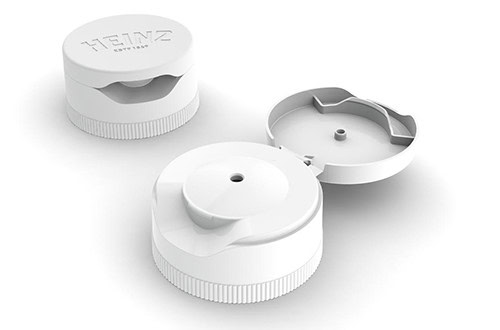At Kraft Heinz, we recognize the growing need for more sustainable packaging solutions. Our innovative redesign of the Heinz Tomato Ketchup bottle closure is a step forward in addressing recyclability challenges while maintaining the functionality that consumers have come to expect. This redesign, which we shared in person at the CGF’s Plastic Waste Coalition Steering Committee meeting in Brussels in February, is just one of the many ways we’re designing sustainable packaging and working to reduce our environmental footprint.
The Balaton Closure: A Breakthrough in Sustainability

Key Features of the Innovative Design
The new closure is made from a single material—polypropylene—which means it’s more valuable to recyclers than the previous design made of multiple materials. By simplifying the design and reducing the number of components, we also created efficiencies in production and logistics. With this change, we’re set to replace approximately 300 million non-recyclable closures every year.
But sustainability isn’t the only thing we focused on. We are consumer obsessed, so we wanted to make sure the closure still delivered the same user experience that ketchup lovers expect. The new design ensured the same “perfect” serving of ketchup, clean dispensing, and simple opening.
Good Design: One Piece of the Puzzle for Circularity
Developing an improved design that didn’t compromise on recyclability or consumer experience was not an easy task. In developing the new closure, our packaging engineers overcame the challenges of durability and functionality while making sure it was compatible with existing recycling infrastructure.
While we are proud of the achievements of good design, we acknowledge that consumer education, infrastructure and suitable end markets all play critical roles in achieving true circularity. For consumers, we need to help them understand how to recycle the new closures and the importance of doing so. Regarding infrastructure, there must be consumer access to collection and sorting to capture the valuable materials from our packaging. We are heavily investing in and partnering with a broad range of organizations to enhance and develop the critical recycling infrastructure necessary. Lastly, we need viable end markets where the resin from closures like ours can be recovered and become feedstocks for new products.
Knowledge Sharing Within the Coalition
One of the things we’ve learned throughout this process is the value of knowledge sharing. Being part of the CGF’s Plastic Waste Coalition of Action has allowed us to collaborate with like-minded companies who are all working toward the same goal: reducing plastic waste. By sharing our experiences and challenges, we are inspiring one another to accelerate progress. The Consumer Goods Forum’s Golden Design Rules have been an invaluable framework for us, guiding us in designing packaging that supports recycling and reduces our environmental impact. We believe that by working together, we can achieve far more than we could individually.
The Future of Packaging
Looking ahead, we know that sustainable packaging will continue to evolve. Our mono-material dispensing closure is just one example of how we’re innovating our portfolio for the future, but there’s still more work to do. We’re also exploring other packaging alternatives, including compostable and reusable solutions, that could help close the loop even further.
Our new Heinz Tomato Ketchup closure redesign is a small but meaningful step in our journey toward more sustainable packaging. It reflects our commitment to reducing our environmental impact while maintaining the high standards that our consumers expect. We’re excited to continue collaborating with our peers within the CGF’s Plastic Waste Coalition of Action and sharing our knowledge to inspire even more innovation in the packaging space. Together, we can create a future where packaging is both sustainable and circular.
